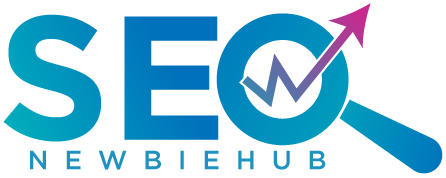Are you wondering why your legal website is not bringing in expected results? It may very well be the case that your law firm website design might be lacking some vital elements. The absence of these features will be stopping you from winning the trust of potential clients. In today’s connected world an effective website helps you get in front of relevant audiences in the best possible manner. A vast majority of people around the world are using the internet to find solutions to their problems. A strong online presence helps in connecting with such users. However, the interface needs to be crafted carefully in order to be effective. Read on to find whether your firm’s website contains these major elements or not.
1. Easily Visible Contact Info On Every Page:
The main objective of a legal interface is to motivate visitors to get in touch with the agency. In order to fulfill this objective, the contact information must be prominently visible on every page. It can be in the form of the phone number, e-mail ID or a link to the contact form. Make sure that the number is clickable so that mobile users can use it easily. This tactic can effectively drive the conversion rate of the interface. People who are impressed by the content of the website or the expertise of the professionals would want to get in touch with the firm. In case they do not find the contact methods easily, they will be forced to look for another option.
2. Intuitive Navigation Scheme:
Take a hard look at your interface and see how much time it takes to find key information. If it is taking too long to locate the different services’ pages or lawyers’ profiles, then your website suffers from poor navigation. An intuitive navigation scheme must be an integral part of the custom website design of any law firm. Place the navigation bar with all the important links on top of the page so that it always remains visible. The easily people can explore an interface, the better its user experience will be which in turn will improve its online visibility.
3. Strong Calls To Action:
A call to action moves visitors ahead on the path to conversion. It is hard to imagine that your interface does not have a CTA button. If, however, in spite of the presence of the conversion instrument, you are not saying favorable results then your CTAs are flawed. A simple “call now” is not going to work every time. You need to provide some value to the visitor and a tab with the message “Call for a free consultation” will be more appropriate. Make sure the buttons are large and colored in bright shades. Another important aspect is the placement of the tabs. The potential clients must be given some time to understand your value proposition and then be greeted with the message. Place the CTA on landing pages and on service pages after the content.
4. Attorney Profiles With Photographs:
Another essential part of law firm website design is the attorney profile. People visiting such interfaces want to know about the lawyers and their professional skills. They want to assess whether the attorney will be suitable for their purpose or not. Every legal interface must have strong lawyer profiles which detail their educational qualifications, professional achievements, and expertise. Scan your page to see whether the content communicates your abilities effectively or not. Moreover, a professionally shot photograph of the lawyer is an essential element of such pages. The image helps in humanizing the professional and establishing a connection with the audience.
5. Optimized Lead Capture Forms:
As mentioned before, the chief goal of a legal interface is to encourage people to get in touch with the agency. The prominent display of the contact details and placement of CTAs are guided by this thought. Another way to get people to take a conversion action is through lead capture forms better known as a contact form. Your interface must have an optimized form which asks for basic visitor information. Request people to provide their name, e-mail ID, address and the nature of their problem. Asking for too many details at this stage can discourage them from sharing the information. The form itself can be a CTA or integrated with another strong call to action.
6. Mobile-friendly Nature:
Is your website mobile-friendly or not? In case you do not know the answer, try opening your interface right now on your smartphone. Check whether it renders quickly and perfectly. A majority of internet users are surfing the web with handheld gadgets. This has made it essential to acquire an interface that adapts itself to all kinds of device screen sizes. Responsive techniques must be incorporated into the design to ensure mobile-friendliness. Search engines like Google also use the factor as a ranking signal. This makes it even more important to have a responsive interface.
7. Informative And Optimized Content:
Content plays a major role in impressing visitors on all kinds of websites. Attorneys can use content to position themselves as thought leaders in their practice areas. They must provide helpful information to people in an easily-understandable language without too much legal jargon. Make sure your interface has a blog section where you can regularly upload posts related to your area of expertise. Do not forget to optimize the write-ups with the keywords you are targeting.
Conclusion
Check your law firm website design to see whether it contains the above-mentioned elements or not. You must engage a law firm marketing consultant to get extensive assistance on improving the online presence of your interface.
Manoar Molla is pro blogger who is passionate to write anything that is related to SEO, business and marketing. He has written and published many articles on different blog

